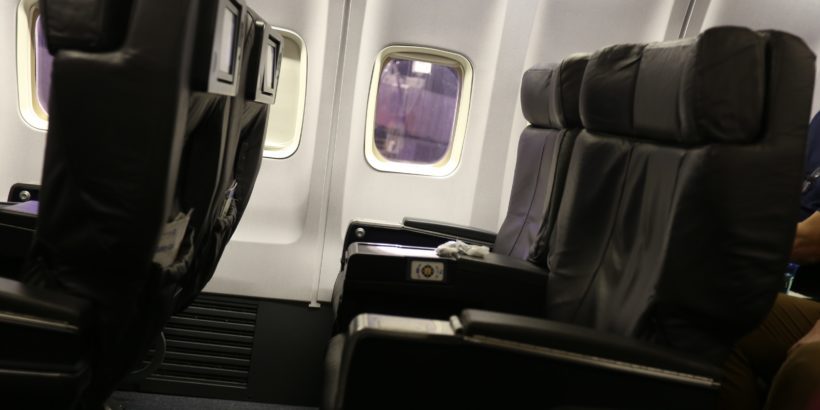One of the most common questions I get is “Is it worth it to get an airline credit card?” My answer to that questions is generally yes, but there are a few factors to think about before putting in that application, such as the type of flexibility you need and what type of perks you’re interested in. In this article, I’ll take a closer look at some of the factors that you’d want to consider.
Update: Some offers are no longer available — click here for the latest deals!
The basics
First, the basics. When you get an “airline credit card” you’re applying for a co-branded card issued by a bank that’s worked out a partnership with that respective airline. Typically, only a single bank will partner with an airline but that’s not always the case (see: Citi, Barclaycard, and American Airlines). The airline cards that I often focus on are cards issued by Bank of America, Citi, Chase, American Express, and Barclaycard, although there are many others.
You can use these airline credit cards at any merchants and you don’t have to limit your purchases to those made with the airline. They are just like any other credit card when it comes to buying things. With each purchase, you’ll typically earn one or two miles for that airline and those miles will usually show up in your account after your monthly statement closes. Also, those miles usually won’t expire as long as you remain a cardmember.
If you sign up for an airline card before you created a frequent flyer account or simply don’t provide your frequent flyer number on your application, a new account will often be created for you and that’s where your miles will go. If you accidentally end up opening more than one account, just call customer service for the airline and it’s usually not a problem to get the accounts merged.
Flexibility vs other cards
One of the drawbacks to airline credit cards is that you’re only earning miles for that airline’s frequent flyer program. So for example, if you sign up for a Citi® / AAdvantage® Platinum Select® World Elite MasterCard® you’re only earning miles for American Airlines. This isn’t as bad as it sounds since you can still use those miles for oneworld partners like Qatar, Cathay Pacific, and other partners like Etihad.

Still, other cards offer you much more flexibility with the types of points earned. For example, with the Chase Sapphire Preferred you could earn Ultimate Rewards and transfer those out to an array of excellent partners including Southwest, Korean, Singapore, British Airways, United, etc. That also provides you with the possibility of redeeming miles on all three major airline alliances, such as: Star Alliance, oneworld, and SkyTeam.
This is why I highly value cards like the Chase Sapphire Preferred. Being able to transfer out points to a variety of partners can make finding award seats and planning for trips 10X more practical. It’s also nice being able to mix up the airlines you fly with and try new products, especially if you’re into business class and first class travel.
What kind of perks are you after?
The major perks of airline credit cards are valuable sign-up bonuses and benefits like priority boarding and lounge access. Depending on what tier of card you’re going for, these benefits can vary dramatically.
No annual fee
No annual fee versions come with virtually no benefits and are typically obtained after a downgrade from a standard version or premium version. You probably don’t want to go around shopping for these and so I won’t discuss them here.
“Standard” version cards
Standard version cards come with benefits similar to elite-status, such as priority boarding and free checked baggage. They typically come with additional perks like mileage rebates, anniversary/spend bonuses, a lounge pass, companion pass or something similar. The annual fees for these cards are often around $95 and are sometimes waived for the first year. If you fly with the respective airline just a hand full of times a year, the perks on these cards can easily pay for themselves.
These type of airlines credit cards are often the best options for many people. They also typically come with the highest sign-up bonuses (although that’s not always the case). These sign-up bonuses often fluctuate throughout the year so it’s vital that you know how to find the best credit offers are for them.
Examples of these type of airline cards are:
- Citi® / AAdvantage® Platinum Select® World Elite MasterCard®
- United Mileage Plus Explorer Card
- Chase Southwest Card
- AAdvantage® Aviator™ Red World Elite Mastercard®
- Gold Delta SkyMiles® Credit Card from American Express
Premium versions
The premium versions come with lounge access to the airline’s lounges and their alliance partners (subject to exceptions), which can often be worth over $550. They also often ways to earn elite qualifying miles like the Citi® / AAdvantage® Executive World Elite MasterCard®, which allows you to earn 10,000 Elite Qualifying Miles after you spend $40,000 in purchases within the year. Since these cards are so benefit-heavy, their sign-up bonuses are often lackluster but their bonus earnings can be better. For example, the United MileagePlus Club Card offers 1.5X per $1 spent on all other purchases compared to 1X with the standard card.

I don’t typically recommend the premium cards to most people since you usually need to be a frequent flyer with a certain program to take advantage of the lounge access and elite qualifying benefits. Most people I help out are just interested in whatever airport lounge access is convenient for them a few times a year and often the best options for them are the The Platinum Card® from American Express or the Chase Sapphire Reserve.
What kind of bonus earning potential?
Alliance and partners
You should definitely be aware of what airline alliance the airline belongs to before getting its card. If you don’t know what their partners are or even what alliance they belong to, I submit that you’re likely not ready to sign up for that card and need to do some more research.
Keep in mind that airlines often have partners from their alliance and then unique partnerships with other airlines. For example, American is in the oneworld alliance but it also partners with Etihad and United is in the Star Alliance but it also partners with Aer Lingus. Sometimes these partnerships offer even better redemption possibilities than the major alliances, so it’s a good idea to be aware of them.
- If you need some guidance on all of this partner talk, then read my guide to booking partner awards here.
Transfer program partners?
The other major factor you want to look into is what reward programs transfer to that airline.
I think this is really important for certain airlines, such as American. They have no major bank partner that earns transferrable points (i.e., no Amex, Citi, Chase, etc.). Instead, you mostly accumulate AA miles with Citi and Barclaycard (SPG does allow you transfer points).
Once you realize that you’re earning potential for AA miles is fairly limited, you’ll realize why you’d need to apply for an AA card instead of a card that earns transferrable points, even though the latter offers more flexibility. Another similar example is Alaska Airlines and their cards issued by Bank of America. Alaska miles are very valuable but they are usually only earned with Bank of America cards or SPG cards.
On the flip side, sometimes you’ll want to supplement your earnings from an airline card. This is really easy to do with Delta and Untied. For Delta, American Express offers a number of different personal and business cards you could get to earn Delta SkyMiles. For United, Chase offers a personal and business Chase card that both come with good sign-up bonuses and then you could utilize bonuses from cards like the Sapphire Preferred and Sapphire Reserve to supplement your United miles. If you’re planning to book segments in business class or first class, being able to supplement your mileage balances might prove to be necessary.
Final word
Airline credit cards can be very valuable. The key is to analyze what other points you could earn in place of those miles to see if you’d be better off with a card earning transferrable points. On top of that, you need to think about the perks you’re interested in and make sure that if you’re going for a sign-up bonus, it’s the best one offered for that card. And remember, it often makes more sense to earn points with everyday spend on a different card while holding on to an additional airline card for the special perks.
Daniel Gillaspia is the Founder of UponArriving.com and the credit card app, WalletFlo. He is a former attorney turned travel expert covering destinations along with TSA, airline, and hotel policies. Since 2014, his content has been featured in publications such as National Geographic, Smithsonian Magazine, and CNBC. Read my bio.

